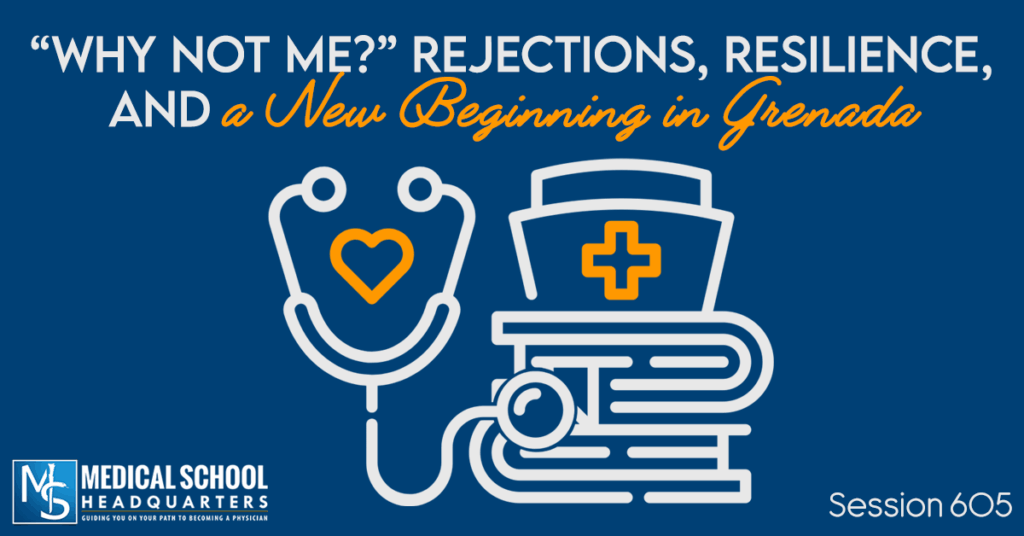You have an overwhelming amount of options when it comes to which medical schools to apply to. It would also take more time and money to apply to all or most of them than is reasonably possible. That means doing your research and making careful decisions about which schools to apply to.
There Are No Tiers of Medical Schools
Of all the things that go into deciding your school list, the imagined tiers of schools should not be one of them. It is true that there are some especially prestigious medical schools, but that is not the most important factor consider. Any medical school in the US will allow you to practice medicine throughout the country, and will also provide you with a quality education, and a wealth of opportunities.
The mission and environment of the school should be more important to you than the name, and will do a better job of predicting whether you’ll be successful and happy at that school.
With that in mind, what should you consider when building your school list?
Factors to Consider
Stats
Most students’ first instinct is to look at the MSAR and apply to schools made up of students whose stats “match” theirs. While this information isn’t without use, it’s not the only or main thing you should consider.
Students also often misinterpret the data provided by MSAR. They assume it shows the mean stats of accepted students, when really it shows the median. This means that half of the students will be above the number shown, and half will be below it. Fortunately, the MSAR provides information beyond the median, and it would benefit you to look at the additional information. It also provides the 25th to 75th percentile ranges, and the 10th and 90th percentiles. Being at or below the 10th percentile is not an automatic no. If you really want to go to that particular school, let them be the ones to tell you no.
However, if you need to limit your list because of budget and time, looking at the 10th percentile is a reasonable way to do that. It doesn’t mean you definitely wouldn’t get in, but it can indicate you may not be as competitive of an applicant.
Trends vs. the Final Number
Another layer of whether to let your stats decide what schools you apply to is what your final trend looks like. MSAR can only tell you those students’ final numbers. It doesn’t show you what their trend looked like, and it doesn’t allow you to see your trend either. Admissions committees do see your story.
They can play around with all of the data in front of them and recalculate your GPA in any number of ways. They can also see if you struggled at the beginning of college, and then did 45 credits of upper-level sciences classes at or near a 4.0, and be confident that you can make it through medical school. Your story makes a difference.
MD vs. DO
How do you decide whether to apply to only MD schools, only DO schools, or both?
For the majority of students, my advice is to apply to both MD and DO schools. There are so many variables that influence whether a student is accepted, applying to a variety of schools can increase your chances of getting into any medical school.
This isn’t a blanket recommendation because you may have good reasons for wanting to apply exclusively to MD schools. If you’re highly interested in practicing internationally, this is easiest to do with an MD, but DOs are becoming increasingly recognized abroad.
You may also be concerned about the negative bias DO students can face when applying to residency. This is most likely an issue if you’re applying to the most prestigious programs within some of the most competitive specialties. However, this bias is nonexistent in most programs and is becoming less and less common overall.
You can read more about the differences and similarities in MD and DO training here.
How I Recommend You Choose Schools
You should choose schools that you genuinely want to go to. Which factors to prioritize may vary between students. Still, some you should consider are location (including weather, proximity to family and friends, where in the country you want to live), curriculum, class size, and many other factors that might play into your decision. Starting with a region or regions in mind can help you narrow the number of schools to research while building your list. There’s no need to do pore through a school’s website that’s in a state you’d never want to move to. You also need to pay close attention to each school’s mission and find those that match your story and philosophy.
Apple Podcasts | Google Podcasts
Curriculum
While US medical schools are all essentially teaching the same information, there is no set way that they have to teach this information. Some may teach a traditional curriculum, teaching each subject in discrete blocks. The basic sciences are taught separately from their clinical contexts in this style. Many schools now utilize a systems-based curriculum where students are taken through each organ system and are taught about each subtopic within each system block.
Some schools are adding more problem-based learning to their curricula, and other schools utilize a flipped curriculum. You should research the different curriculum types and decide which you think will be the best fit for how you learn.
If there’s a school you really want to attend but are worried about the curriculum, it is still possible that you can succeed at that school. It may just require added effort and continual self-reflection to adjust your studying to achieve the best results possible.
Class Size
When deciding what’s the best fit for you, it may be helpful to consider what size of college classes you enjoyed. Did you enjoy being one of many students? You might thrive at a medical school with an M1 class of 300 students. If you enjoyed your smaller, upper-division courses, you might thrive at a relatively smaller school.
Culture of the School
It can be very difficult to know what the culture of a school or any environment is like before you get there. There are still some ways to get a sense of the school’s culture from online research. Be open to any school because you might find the perfect fit somewhere unexpected, and the school you had at the top of your list may be a poor match. Hopefully, you will get the chance to visit the school through an open house or an interview. Being there and talking to faculty and students can shift your entire perception of the school.
When you’re visiting schools for interviews, learn as much as you can by asking questions, exploring the school, and exploring the area.
Mission
To best get an idea of what the admissions committees are looking for, take a good look at their mission statement. The admissions committee is looking to build a class of students that will fulfill the school’s mission in some way. A school may not even interview you if you don’t fit their mission. This might be because they are very mission-driven and only want students that fit, or because they are trying to save you from adding to the risk of burnout by going to a school that doesn’t match your goals.
In-State vs. Out-of-State
When making your school list, you should consider which state you’re a legal resident of. Public medical schools receive a large part of their funding from the state and are typically limited in how many out-of-state students they can accept. Texas is generally used as one of the most restrictive examples. TMDSAS schools can only accept up to 10% of their class from out of state.
If you plan to apply to out-of-state public schools, check their statistics to see how “out-of-state friendly” they are. For MD schools, you can often find this information on MSAR by looking at what percentage of their accepted students are from out of state. They may also have their policies laid out on their websites. It’s also worth considering whether there are any states you have strong ties to other than your own. If you can explain these, a school may be willing to consider you even if they are not very out-of-state friendly.
Private Schools
For most private schools, your state of residence is not essential, and all students will pay the same amount of tuition. This tuition is generally much higher than that at a public, in-state school.
International Students
All medical schools will consider you an “out-of-state” student if you are an international student. It is typically more challenging to get into a US medical school as an international applicant. A lot of it can come down to doing careful research into how different schools handle international students. Some schools won’t accept international students at all, others may be open to them but rarely accept them, and others have a relatively large population of international students.
There are two significant issues for the international students and the schools that admit them. International students are not eligible for federal loans. Most international students have to prove in advance that they can afford all or most of the cost of their education. Others may be lucky enough to receive some funding from a school that wants them in particular.
There are also concerns about students’ ability to get a work visa after graduating. If you cannot attend residency or have to delay residency, that can cause reputation and accreditation concerns.
Acceptance Rates
Although it’s helpful to understand that many students need to reapply, focusing on the acceptance rate of any particular school will not be very helpful to you. They typically range from 2% to 4%, and focusing on these can be unnecessarily anxiety-provoking. The overall acceptance rate for the entire pool of students applying is closer to 50%. Many students also apply to schools that aren’t a good fit, making the numbers look worse than they are for students who build their list well.
Tuition
For many of you, you won’t be able to avoid thinking about tuition at all, but it should be last on your list of deciding factors. You could lose more money by delaying your career by a year by having to reapply than you would “lose” by paying higher tuition. Look at the big picture and what your top priorities are. However, it can be a helpful tool in cases where you have multiple acceptances to choose from.
How Many Schools Should You Apply To?
This answer will vary among students, but it can be helpful to know what’s typical or average. According to the AAMC, students in the 2020-2021 cycle applied to 17 schools on average. DO applicants applied to nine schools on average. I don’t recommend applying to more than 25 schools. At some point, you will have decreasing returns on your investment.
Applying to each school takes time and money. If you overwhelm yourself, you might submit a worse application than you could have if you had focused on fewer schools. With a strong application and a well-thought-out school list, you shouldn’t need to apply to more than 15 schools. Don’t spend more money than you have to. And you can check out appexpenses.com to get an estimate of what the costs will be.
Hopefully, with this guidance in mind, you can find the right medical school for you and become a great physician.






